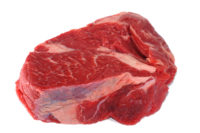With ingredient prices trending up and shoppers unwilling to pay more, food packagers are shifting to downsized containers.
Less may be more, or more may be better, but the emerging consensus among shoppers is, “I’ll take less if the price is the same.”
Household budgets are strained, and people are unwilling or unable to spend more. At the same time, food companies wrestling with higher raw material costs find it increasingly difficult to pass those costs along at retail. That leaves two options: Accept thinner sales margins or downsize the package. Unsurprisingly, a growing number of manufacturers are selecting option two.
One example is Tropical Cheese Industries, which saw a 20 percent sales spike in drinkable yogurt sales despite a 12 percent reduction in container size last year. “In the last 18 months, everybody started moving down to seven-oz. containers and keeping the price the same,” says Tropical’s Joe Vicini, vice president of manufacturing at the Perth Amboy, NJ firm. The company’s low-fat, light and probiotic yogurts were in eight-oz. HDPE containers, but the downsized bottles are actually three-quarters of an inch taller, thanks to an hourglass shape.
The design work and mold-making were done by the Studio One Eleven division of Chicago’s Berlin Packaging, which delivers turnkey or à la carte services in package manufacture, distribution and consulting. For the Tropical project, Packaging Consultant Chris Ortiz contracted with Shelburne Plastics in Jessup, MD to blow mold the bottles and apply the shrink sleeves. Retooling of the shrink sleeve applicator and modifications to the graphics printing were necessary to address distortion issues that surfaced when labels had to adapt to the new bottle’s contours, according to Ortiz.
Smith’s Dairy in Orrville, OH is holding the line at 1.75 quarts for ice cream, resisting the 48-oz. move that has become standard for major ice cream brands. In December, the company convened a focus group to get shopper reactions to a possible reduction in size from 56 oz. Instead of discussing perceived value, those shoppers were more interested in talking about how much they disliked Smith’s square carton. That led Penny Baker, marketing director for Dairy Enterprises Inc., Smith’s parent company, to order a conversion to so-called scrounds, the oval containers with snap-on lids that were popularized in ice cream packaging in the last decade.
Coffee manufacturers blazed the downsized container trail years ago, and Baker is uncertain how much longer Smith’s will resist the downsizing trend in ice cream packaging. Among focus group participants juggling priorities in a tough economy, “price trumped size,” making getting less a fair tradeoff for spending the same, she notes.
“Companies are trying to reduce their costs by reducing the fill,” agrees Berlin’s Ortiz. “The downsizing movement is everywhere.”
For more information:
Chris Ortiz, Berlin Packaging, 610-755-2275

